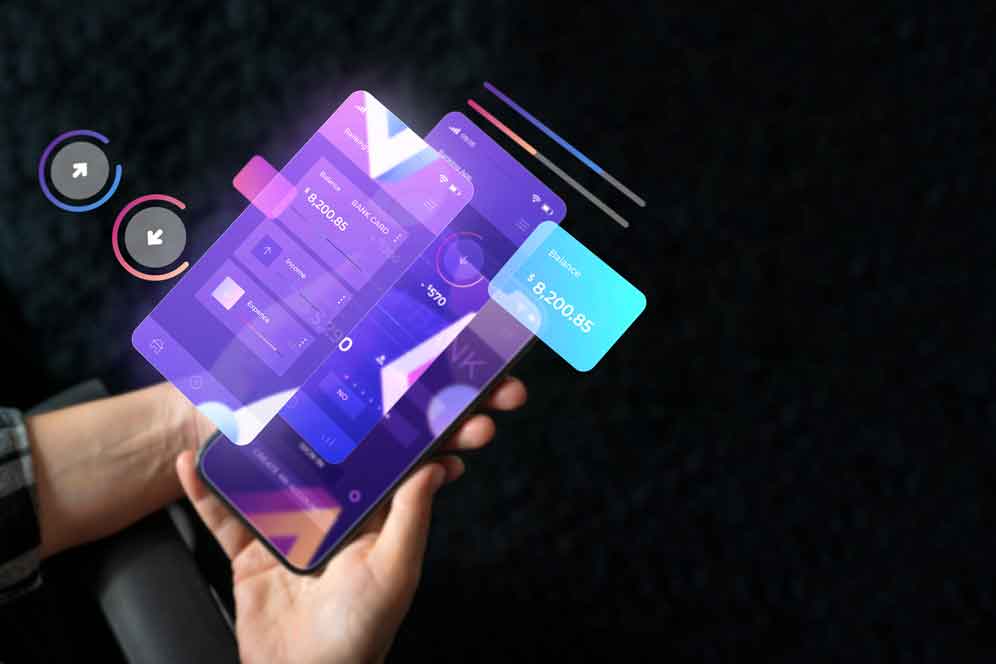Creating Intuitive User Experiences: Practical UX Rules for Non-Designers
Whether you’re a developer who built your own app, a graphic designer transitioning to digital, or someone working on side projects, creating intuitive user experiences is crucial for the success of your product. This article shares practical UX guidelines that don’t require extensive user research or specialized training to implement. Let’s explore four key rules that will help you speak the language of interfaces and create designs that users can naturally understand and navigate.Rule 1: Obey the Law of Locality
Put interface elements where they affect change. The Law of Locality is a fundamental principle that’s often overlooked: interface elements should be positioned near where their actions will take effect. This is important because users instinctively look at the area that will change when they want to make an adjustment.Example: Adding Items to a List
When designing an interface with a list of items (like playlists, tasks, or contacts), where should you place the “Add” button?❌ Common mistakes:
- Hiding it in a menu
- Placing it in a fixed position disconnected from the content (like a floating action button)
- Putting it wherever there’s empty space
✅ Better approach:
- Place the “Add” button at the end of the list, where the new item will appear
- If the list can get very long, consider these alternatives:
- Position the button at the top of the list
- Use a sticky button that stays visible at the bottom of the viewport
This approach aligns with how users think: “I want to add a new item to this list, so I’ll look at the list itself.”
Why It Works
The Law of Locality creates interfaces that match users’ mental models. When users want to add something to a list, they naturally look at the list itself—not at the menu bar or a random corner of the screen. Major applications like Spotify implement this principle effectively. Take note of how they position their “Create Playlist” button at a logical position within the playlist section.Rule 2: ABD - Anything But Dropdowns
Before using a dropdown, consider if one of these 12 alternative controls would work better. Dropdowns are one of the most overused and problematic UI controls. They have several significant drawbacks:- They require multiple clicks/taps to use (open, scroll, select, close)
- The options are hidden until clicked
- Long dropdown lists are extremely cumbersome to navigate
Better Alternatives for Different Scenarios
For 2 Options:
- Segmented button: When either option might be selected with roughly equal frequency
- Checkbox: When there’s a clear default state (especially for settings)
- Switch: For toggles that apply immediately
For 2-5 Options:
- Segmented buttons: Either horizontal or vertical
- Radio buttons: Especially good when each option needs additional sub-elements
- Cards: For visually displaying detailed choices
- Visual selectors: Showing literal visual representations of choices
For Many Options:
- Typeahead/autocomplete: A search-like interface showing top matches as you type
For Dates:
- Calendar control: For selecting dates in the near future (appointments, reservations)
- Date text inputs: For dates with high variability (birthdays, historical events)
For Numbers:
- Stepper control: For selecting from a small range of numbers, especially when smaller values are more common
When Dropdowns Are Acceptable
Dropdowns aren’t always bad. They can work well when:- Users rarely need to change the default value
- There are very few options (3-5)
- The interface is not on mobile
- Custom implementations expand to show all options at once
Rule 3: Pass the Squint Test
When you squint at your interface, the most important elements should still stand out. The Squint Test is a quick way to evaluate visual hierarchy. Blur your vision (or literally squint) while looking at your interface. The most important elements should still catch your attention first, and the least important elements should be the last things you notice.How to Apply the Squint Test
- Identify the Most Important Thing (MIT) on each screen—typically the primary action users need to take
- Ensure this element has the most visual prominence through contrast, size, color, or position
- Create a clear visual hierarchy from most to least important elements
Common Violations
Many interfaces fail the Squint Test by:- Making secondary actions (like “Help” or “Cancel”) more visually prominent than primary actions
- Using the same visual styling for actions of different importance
- Hiding critical functions in plain text instead of making them look interactive
- Placing the MIT in unexpected or easily overlooked locations
How to Fix Squint Test Failures
- Use color contrast to make primary actions stand out
- Size buttons appropriately to their importance
- Position critical elements in prominent locations
- Remove or reduce visual emphasis on rarely used features
Prioritizing by Usage Frequency
One way to determine importance is to analyze how frequently different actions are performed. Actions that users take most often should generally be the most prominent. For example, on a flashcard app, if users view the answer 95 times for every 2 times they navigate back to the deck list, the “Show Answer” button should be much more prominent than navigation controls. For more on visual hierarchy, see Interaction Design Foundation’s guide to visual hierarchy.Rule 4: Teach by Example
Show users how your interface works through examples rather than lengthy explanations. The best interfaces require minimal explanation because they teach users how to use them through clear examples and intuitive design patterns.Implementation Strategies:
- Use descriptive placeholders: Instead of “Enter text here,” use “Search for a city (e.g., New York, Tokyo)”
- Show sample data: When a user first encounters a new feature, populate it with realistic sample content they can learn from
- Progressive disclosure: Reveal advanced features gradually as users master the basics
- Inline hints: Provide brief, contextual guidance exactly where users need it
- Empty states that educate: When a list or dashboard is empty, use that space to show how it will look when populated
Real-World Examples:
This approach reduces the learning curve by leveraging users’ ability to learn through observation and imitation rather than reading documentation.
Putting It All Together
These four rules can dramatically improve the usability of your interfaces without requiring extensive UX expertise:- Law of Locality: Place controls where their effects will be visible
- Anything But Dropdowns: Choose more appropriate controls when possible
- Squint Test: Make important elements visually prominent
- Teach by Example: Show users how things work rather than telling them
Why These Rules Matter
Good UX isn’t just about aesthetics—it directly impacts your product’s success:- Reduced abandonment: Users quickly leave frustrating interfaces
- Lower support costs: Intuitive designs generate fewer questions and support tickets
- Higher conversion rates: Users complete tasks more successfully when the path is clear
- Competitive advantage: When two products have similar features, the more usable one usually wins
Tools to Help You Apply These Rules
Conclusion
Creating intuitive user experiences doesn’t have to involve complex methodologies or extensive user research sessions. By applying these four practical rules consistently, you can dramatically improve your interface’s usability. Remember, the goal isn’t to create the most beautiful or feature-rich interface—it’s to create one that feels natural and obvious to your users. When users can accomplish their goals without thinking about the interface itself, you’ve succeeded. The next time you’re designing a screen or evaluating an existing interface, run through these rules as a checklist:- Are controls placed where they affect change?
- Have I avoided unnecessary dropdowns?
- Do the most important elements pass the squint test?
- Am I teaching by example rather than explanation?
For more on creating intuitive user experiences, check out resources like Steve Krug’s “Don’t Make Me Think” and Nielsen Norman Group’s UX training resources.



